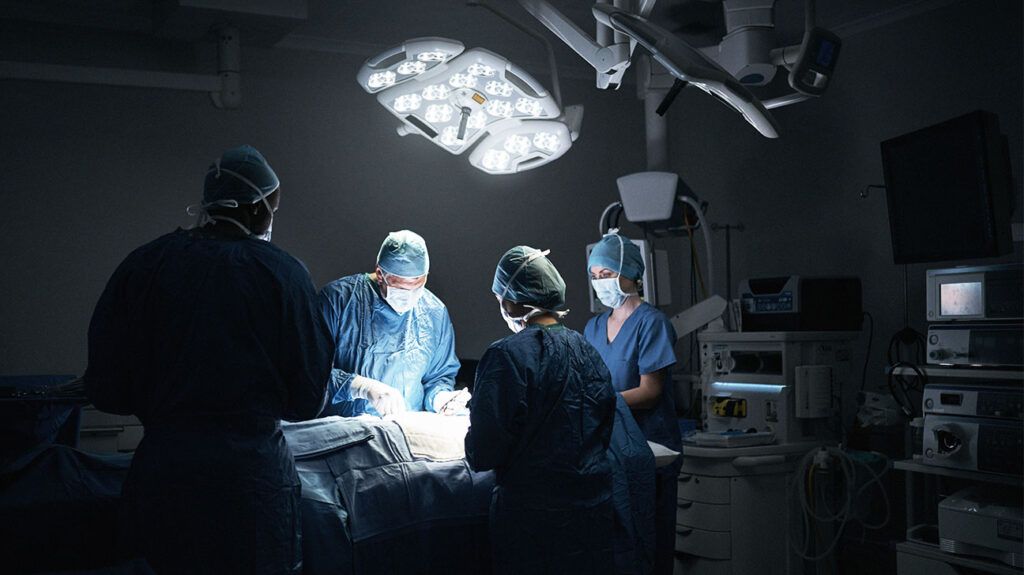Arytenoidectomy is a surgical produce doctors use to widen the airway and help a person breathe. It is a common treatment for bilateral vocal fold paralysis (BVFP).
During an arytenoidectomy, the surgeon removes the arytenoid cartilage. The arytenoid cartilages are a pair of pyramid-shaped structures in the larynx (voice box) that
The procedure is permanent and irreversible.
This article will review arytenoidectomy, why and when doctors perform it, its risks, contraindications, and what people can expect.

Arytenoidectomy is a surgical procedure during which a surgeon partially or completely removes the arytenoid cartilage. The procedure may involve lasers. The main aim is to enlarge the laryngeal channel to provide a wider airway and help breathing.
It is one of the most common treatments for bilateral vocal fold paralysis (BVFP).
With BVFP, neither of the vocal cords moves. The vocal cords have
Arytenoidectomy is a permanent and irreversible procedure. Therefore, it should not be attempted on anyone who has a chance of their vocal function returning.
Doctors may recommend it for people who have had vocal cord paralysis or paresis for
Doctors usually wait a year to see whether vocal function returns, unless the cause of the paralysis or paresis is known and they are certain function cannot come back.
Some alternatives for treating vocal cord paralysis include suture lateralization, tracheostomy, or cordotomy.
Undergoing an arytenoidectomy
As the procedure requires general anesthesia, there is a risk of associated side effects, such as drowsiness.
After laser arytenoidectomy, there is a risk of scar tissue forming in the affected area. This can lead to a narrowing of the larynx and inflammation, specifically of the cricoid cartilage.
There is also a risk of swelling post-procedure. Although rare, the swelling can obstruct the airway. When this occurs, doctors may consider inserting a small endotracheal breathing tube.
Arytenoidectomy can also cause changes in the sound and quality of the voice. In fact, this is very common.
Other
The person undergoing arytenoidectomy will receive general anesthesia.
It might require a doctor to
However, in some cases, the surgeon will perform a tracheotomy beforehand. It involves creating an opening in the trachea and placing a tube inside. A tracheotomy helps ensure that air is reaching the lungs. Once the tube is in place, doctors can start the arytenoidectomy.
The procedure can vary depending on whether a person has a partial or a total arytenoidectomy. Sometimes, surgeons perform a cordotomy at the same time to help manage restricted airways.
Partial vs. total arytenoidectomy
Partial arytenoidectomy is the primary treatment for BVFP.
During a partial arytenoidectomy — also known as medial arytenoidectomy — doctors will remove only part of the arytenoid cartilage depending on how much widening the airway needs. It typically has a low impact on the voice quality, and the person undergoing surgery tends not to report many complaints.
If a partial arytenoidectomy fails to correct the issue, a person may require a total arytenoidectomy. During this procedure, doctors will use the CO2 laser to remove the arytenoid cartilage completely. It can also cause voice changes that are not reversible.
People can usually eat food about
If a tracheostomy is necessary, specialists may remove it around 1 month after the initial postoperative swelling in the throat disappears.
It can be extremely distressing to cope with voice changes. Often, patients will need speech therapy once the wound has healed. It can help with voice quality and swallow function.
Working with a speech-language pathologist can help prevent complications such as aspiration and improve voice.
Many patients will have undergone preoperative swallow evaluation and require it again postoperatively. Since aspiration is a concern, doctors must ensure it is safe to swallow before letting them eat what they want.
Doctors may also prescribe reflux medications to reduce inflammation and promote healing in the larynx.
Around
A person will likely develop changes in their voice after an arytenoidectomy. However, this is generally a safe procedure that can improve BVFP.
Arytenoidectomy is usually irreversible.
It is unsuitable for people who may have trouble with voice changes or poor voice quality. Those unwilling to consider undergoing speech therapy may also be unsuitable candidates. Speech therapy is necessary post-procedure to help prevent complications.
Also, arytenoidectomy may not be ideal for people who typically develop irregular fibrous or overgrown scars. This is because it can lead to unpredictable voice changes and affect healing.
While doctors
An arytenoidectomy is a surgical procedure during which a doctor completely or partially removes the arytenoid cartilage. The main aim of the surgery is to widen the airway and promote airflow. The changes are usually irreversible and permanent.
Doctors recommend this procedure for people who have sustained injury or paralysis of the vocal cord and have not shown any improvements for at least one year.
Arytenoidectomy is usually safe, but it can cause voice changes. There are some risks of complications, such as scarring, but a doctor will assess patients beforehand and determine how appropriate the treatment is.
